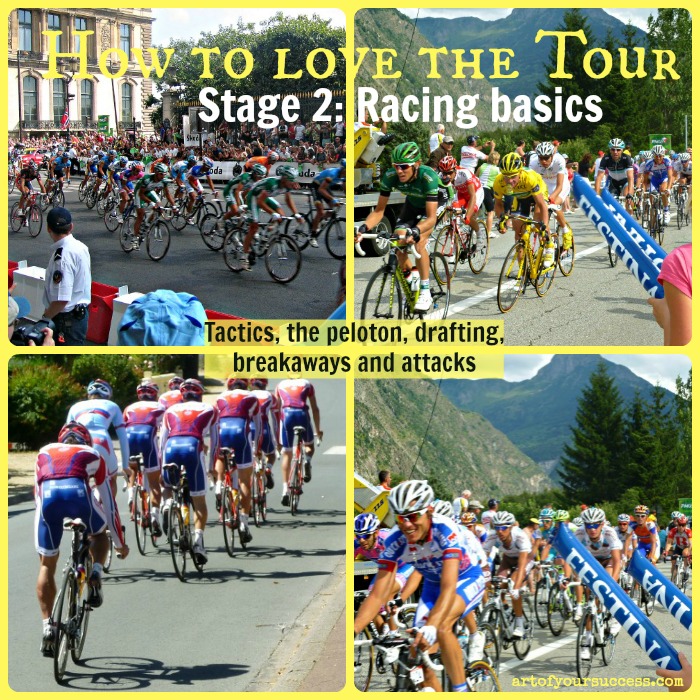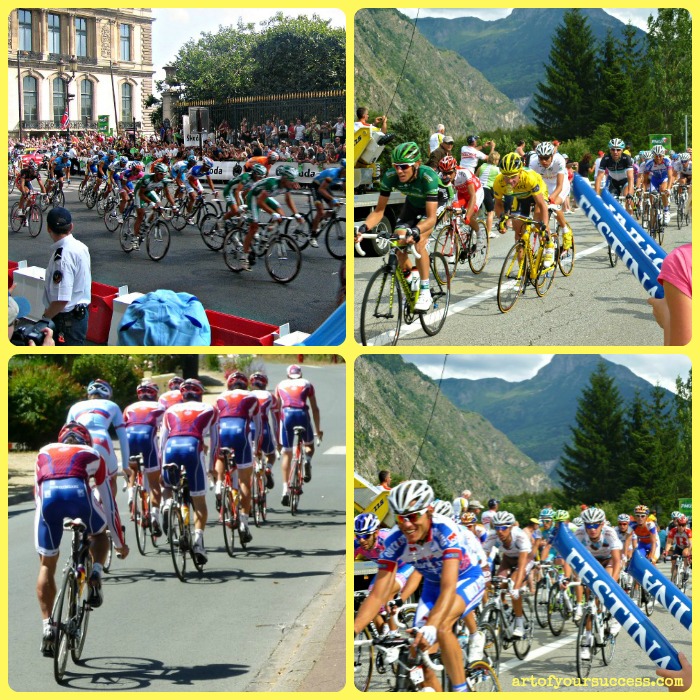
Tactics, the peloton, drafting, breakaways and attacks
So now you know all about the jerseys from Étape 1 of this guide, it’s easier to get to understand how the race works and what makes it exciting.
TdF Structure – the stages
The Tour follows a standard structure: It’s always 21 stages (1 stage per day with 2 rest days, so 3 weeks), a broad loop of France, and over 3,000 km / 2,000 miles (3,414 km /2,121 miles in 2021 – see route below).
The stages include flat, hilly, and mountainous sections, plus individual and/or team time trials. The stages are typically around 125 miles, and take the Pros 4 to 6 hours.
TdF Tactics
So as we know now, the top prize is the yellow jersey of the General Classification. Not all of the 22 teams will go for this. And the teams that do, don’t worry about winning every stage, or even many at all.
The teams vying for the yellow jersey will concentrate on where the other yellow jersey riders are relative to them. So this explains why one team will chase down another at the end of the day, to prevent another top-placed rider gaining a time advantage by finishing a few minutes ahead.
You’ll also often see the top riders marking each other move for move in the mountains in the later stages of the tour. The Tour is often won or lost in the mountains as riders don’t have the benefits of drafting in the peloton like on the flat stages.
Drafting and the peloton
Although they ride very fast (averaging 25-28 mph on the flat and 21-25 on mountain stages), the riders aren’t going as fast as they can the whole time. They mainly ride together in a large pack – the peloton (you’ll also hear it called ‘group’, ‘bunch’, ‘pack’ or ‘field’). This is very efficient as riders can use up to 40% less effort from cycling in the slipstream of those in front – drafting.
Breakaways, sprints and attacks
So if it’s easier in the peloton, why are there breakaways? Usually a group of 3 to 6 riders will break off the front most days, although it can be a solo rider. Fairly often, this is to give their sponsors some camera time, and so you don’t normally see overall contenders do this (they have teams to help protect their energy). The breakaway riders will often be from rival teams but usually agree to work together, to give themselves more of a chance by drafting together to try to keep the peloton at bay.
Thrillingly sometimes the breakaways manage to hang on to win the stage. More often they get swallowed back into the peloton when they tire, or if the peloton chases them down because they’re a threat (to the GC, see stage 1), or when the peloton is speeding up at the end of a stage gearing up for a mass sprint with lots of cyclists going for the stage win.
Slightly different from a breakway, attacks usually take place on climbs. It’s exciting stuff to see a rider very suddenly power away from the group he’s with. He may make it if he hasn’t gone too early, and has the leg power to finish the climb strongly, or if the other riders just can’t keep pace.
Read on for more Tour info
Read on the next étape where we learn more about racing: team make-up, lead-out trains, time trials and crashes…
Show your support and knowledge of the Tour with a TdF-inspired t shirt.
Recap all the How to love the Tour posts:


[…] now we know about the different competitions for the jerseys & how racing works , it’s time to look at how the Tour riders do their fastest […]
[…] Stage 2: TdF racing basics: tactics, the peloton, drafting, breakaways and attacks. […]